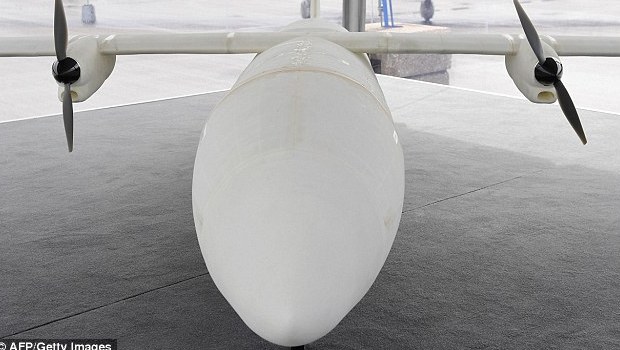The mini aircraft Thor was showcased at the Berlin air show this week. This airbus is the world’s first mini plane and was an absolute show stopper owing to its remarkable 3 D print technology which is all set to change the future of the aviation world.
At 46 pounds and 13 feet length, this windowless aircraft drone called Thor-“Test of Hi-Tech Objectives in Reality”, is expected to save time, money, and resources.
Detlev Konigorsk, the person responsible for developing the Thor, for the European aerospace power Airbus, was quoted saying at the International aerospace exhibition and air show at Berlin that, “This is a test of what’s possible with 3D printing technology,”. He further went on to say that the development process would become faster and easier by using a technology that would design the entire system than just the sub-parts.
A substance called polyamide has been used to develop this mini aircraft (expect the electrical circuit) and it is extremely stable and smooth in flight. This was confirmed by the chief engineer Gunnar Haase, who conducted Thor’s first flight last November, near Hamburg, Germany.
The competition gets tougher-
3D printing technology is already being used by Airbus and the American counterpart Boeing, for developing parts of the A350 and B787 Dreamliner passenger jets. Jens Henzler of Bavaria-based Hofmann Innovation Group has stated that with the use of 3D print technology, the pieces will be made very quickly and would not require tools for manufacturing. He also said that the production waste would become null and the metal parts would be 30-50 % lighter than before.
European Space agency (ESA) would use this print technology in designing the Ariane 6 that is set to blast off in 2020. This would bring down the cost of production by 50% of its predecessor Ariane 5.
Future Innovations-
The 3D print technology would be making pieces up to 40 cm that could be used in elaborate designs.
The Airbus is conducting tests to print a complex injection assembly that was earlier composed of 270 parts to reduce it to simplified design of 3 parts. This would save costs and be environment-friendly as it would save fuel and reduce pollutants emitted in the air.
The air traffic is expected to double up in the next 20 years and hence, an innovation has to be designed to reduce carbon emissions in the air. Ralf Fuecks, head of the Heinrich Boell foundation, addressed a conference at the ILA event with Airbus President Tom Enders, emphasised the importance of 3D print technology for aviation.
The future is optimistic with 70 % people stating that by 2030 the aircraft parts will be printed at airports itself and 51% said that the entire plane will be built using 3D print technology, according to the survey reports of Bitkom, a German hi-tech federation.
Source: 3Dprint.com
